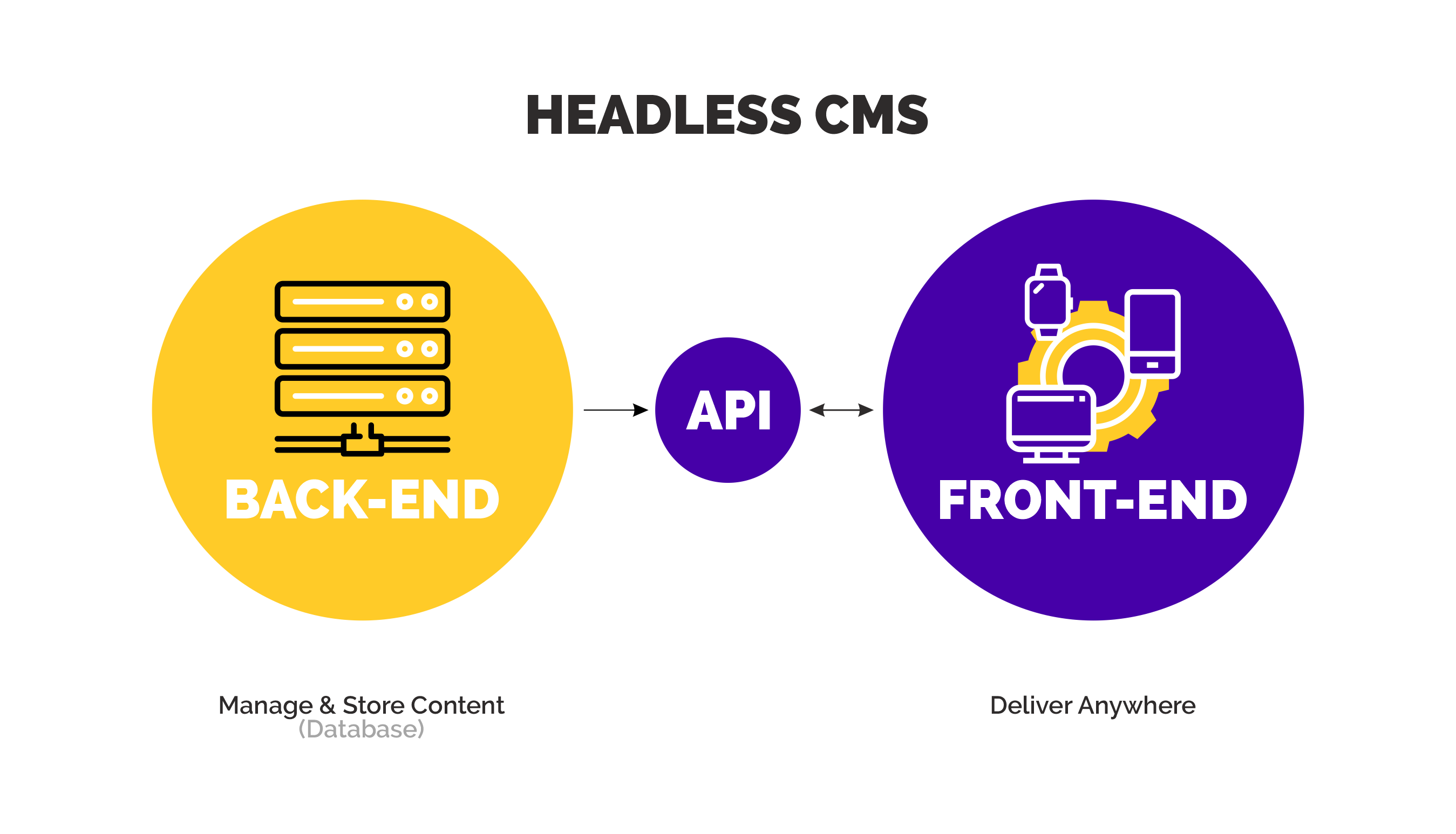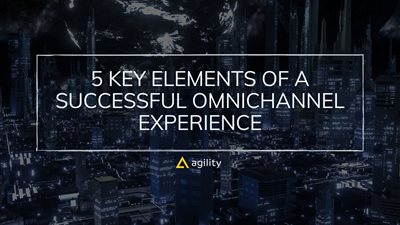How Headless CMS Facilitates Omnichannel Content Delivery (Updated for 2025-2026)
Updated In October 2025 with new insights


This blog was originally published in 2024. It has been updated with new insights for 2025-2026
The root of the word omnichannel – “omni” – is the Latin word “omnis”, which means “all” or “every.”
In 2025, omnichannel content delivery means more than just showing up everywhere. It means showing up everywhere – blogs, websites, apps, etc. – with intent and context. Your potential customers want a personalized, consistent experience across all touchpoints. And more touchpoints are entering the mix:
- Chatbots.
- Voice assistants.
- AI recommendations.
- Smart displays and IoT devices.
The challenge: How to connect storytelling and brand awareness at the current touchpoints of today and whatever touchpoints tomorrow will bring.
The solution: Headless CMS with composable content capabilities.
Why Has Omnichannel Content Delivery Changed in 2025-2026?
The idea of omnichannel isn’t new. The concept has been around since at least 2003. But the way it’s being executed has evolved dramatically. And a key driver can be summarized in just two words, or even just two letters.
Artificial Intelligence (AI)
AI appears to be the key that has fully unlocked personalization. In eCommerce, the numbers don’t lie:
- Companies generate 40% more revenue from AI personalization activities.
- Real-time personalization delivers 20% higher conversion rates.
- Omnichannel personalization sees 6.5x more purchases compared to single-channel approaches.
Artificial intelligence enables dynamic personalization at scale. Think about getting predictive recommendations from Netflix based on your viewing habits.
Now picture that to include meal ideas, or takeout suggestions, or even wine options. All with personalized headlines, layouts, or CTAs based on the context of your behaviour, and where you’re seeing the message.
MACH Principles
MACH stands for Microservices, API-first, Cloud-Native, and Headless. Each letter represents a key element that supports flexible, scalable, and future-proof omnichannel content delivery.
M: Microservices
- Distills your digital ecosystem into independent services (such as search or analytics).
- Allows each component to scale or update individually without impacting others.
- Enables brands to add new capabilities without performing a full website rebuild.
A: API-First
- Ensures every service communicates via APIs so that content is sharable across channels.
- Simplifies omnichannel delivery and multisite deployments by providing a consistent way to access and deliver structured content.
C: Cloud-Native
- Provides elasticity and performance at a global scale to deliver content to users anywhere.
- Enables automatic scaling during traffic spikes to maintain uptime and prevent significant revenue loss.
- Reduces infrastructure management so content teams can deliver without server maintenance bottlenecks.
H: Headless
- Decouples content creation from presentation allowing a single source of content to serve unlimited channels and frontends.
- Supports flexible design and faster launches.
- Empowers developers (via APIs) and marketers (via intuitive interfaces) to deliver consistent, personalized experiences.
The four MACH principles come together to form the backbone of modern omnichannel delivery. They provide speed, scalability, and flexibility to create, manage, and distribute content across every channel and device.
|
Agility CMS is a member of the MACH Alliance, a community of tech companies dedicated to promoting MACH principles to create better customer experiences. |
What is Omnichannel Content Delivery in 2025-2026?
Omnichannel content delivery is the strategy of creating and distributing content that provides a seamless, consistent, and unified brand experience across all channels.
Let’s parse this:
|
Element |
Definition |
|
…the strategy of creating… |
Not a single action or tool. A deliberate, repeatable plan that establishes how content is created, managed, and shared. |
|
…and distributing content… |
Producing and publishing content. This can be blogs, videos, product information, pricing details, and campaigns for multiple platforms. |
|
…that provides a seamless, consistent, and unified brand experience… |
Making every interaction feel connected. Tone, messaging, and design are always the same. |
|
…across all channels. |
Where content is consumed. This can include websites, emails, apps, social media, in-store display screens, and more. |
How Does Headless CMS Support Omnichannel Content Delivery from Start to Finish?
Using a blog as an example, once it’s ready to publish, the benefits of a headless CMS kick in. Instead of managing separate versions for each channel (the old multichannel method), a headless CMS streamlines the process.
Here’s how it all happens in practice:
|
Step |
Action |
|
Create and Publish Once |
The blog is created in the headless CMS and all fields – media, metadata, alt-text, SEO, etc. – are filled. Hit publish and now it’s live. |
|
APIs in Action |
After publication, the content is accessible via APIs, ready to be pulled into any frontend, like your website, mobile apps, or digital kiosks. |

|
Webhooks Trigger
|
A webhook is like a signal. It tells all your connected systems that new content is published and needs to be available. |
|
CDN Delivery
|
All the content in the blog are optimized and delivered globally through a Content Delivery Network (CDN) for fast load times. |
|
Channel Rendering
|
Each channel renders its own version of the blog within its native design and UX for consistency. |
|
Personalization and Analytics.
|
Integrated tools can personalize what each user sees, while analytics track engagement and performance across touchpoints. |
Your content is consistent, fast, and adaptable across every channel your brand appears on. The focus is placed on creating high-quality content instead of cumbersome, technical manipulation to ensure it’s on your website or mobile app or home assistant or wherever.
Best Practices for Omnichannel Content Delivery in 2025-2026
To stay ahead of emerging trends and technologies, businesses should follow these best omnichannel content delivery practices:
1. Adopt a Composable Stack
Integrate solutions Digital Asset Management (DAM), analytics, Customer Data Platforms (CDP), etc. using API-first architecture.
2. Automate
Use tools to automate personalization, translation and localization, and performance optimization.
3. Centralize Content Governance
Manage tone, taxonomies, and templates from a single source to ensure brand consistency. For example, if your CTA buttons are hex code #2596BE, ensure they are always #2596BE wherever they appear.
4. Leverage Real-Time Data
Combine your CMS with a CDP or analytics layer to deliver context-aware content instantly.
5. Design for Modularity
Headless CMS like Agility CMS is component-based. That means content is treated as reusable building blocks that can be used across channels vs creating, say, a hero banner for your website, and then another hero banner for your app, and then another hero banner for your microsite, and so forth.
6. Focus on Speed to Market
If all things are equal regarding content output, a poorly managed content process costs B2B firms an extra $120,000 (USD) per year. Empower marketers and developers to work independently and with effective workflows for faster content launches.
Case Study
See How SCENE Used Agility CMS to Innovate Its Omnichannel Customer ExperienceManaging multiple channels and content updates was slowing SCENE down. They wanted to update their website but knew that it would be a challenge to deploy to their mobile site. They also had plans to launch a new mobile app, and content consistency was a key factor to consider. Find out how Agility CMS helped them streamline operations, reduce friction, and scale their content strategy with confidence. Read the Full Case Study Success Story |
Future-Proofing Omnichannel Content Delivery is Now a Must. Do It With Agility CMS
Customer expectations continue to evolve. Those expectations include the technology and strategy behind content delivery. They don’t just want to see your content, they want to consume it contextually and wherever – and whenever – they happen to be.
Marketing teams can create content once – just once – and deliver it everywhere. In fact, let’s use that as an example. Imagine your tagline is “Create Once, Publish Everywhere”. Now imagine if this is how it appears:
- On your website: Create Once, Publish Everywhere
- On your app: Create once and publish everywhere
- On your digital signage: Create Once & Publish Everywhere.
It’s inconsistent. And it’s a pain to fix.
Agility CMS solves that pain point.
It’s a true omnichannel content delivery tool. It leverages core elements like MACH principles to help you create content that’s consistent, connected, and capable of growing with your brand.
For more information:
|
Let us take you on a guided tour. |
Try Agility CMS at no cost for 30 days. |
Send us your questions or comments today. |

About the Author
Mauro Flammini is the Content Manager at Agility CMS. He has over 20 years of content marketing experience, including for international brands such as Research In Motion and Intuit. He lives in Hamilton, ON with his wife, two daughters, and one dog.





